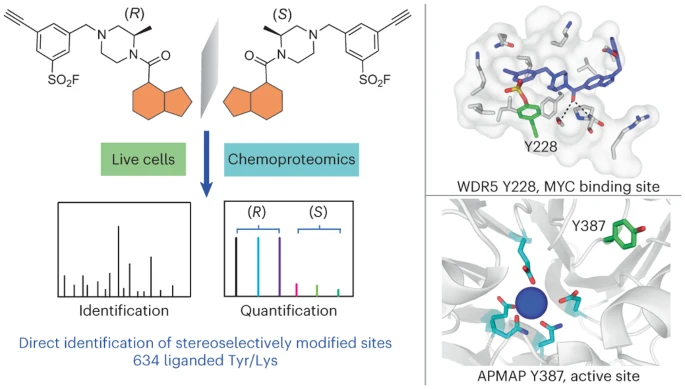Ying Chen, Gregory B. Craven, Roarke A. Kamber, Adolfo Cuesta, Serhii Zhersh, Yurii S. Moroz, Michael C. Bassik & Jack Taunton
Nature Chemistry 2023
https://doi.org/10.1038/s41557-023-01281-3
Advances in chemoproteomic technology have revealed covalent interactions between small molecules and protein nucleophiles, primarily cysteine, on a proteome-wide scale. Most chemoproteomic screening approaches are indirect, relying on competition between electrophilic fragments and a minimalist electrophilic probe with inherently limited proteome coverage. Here we develop a chemoproteomic platform for direct electrophile-site identification based on enantiomeric pairs of clickable arylsulfonyl fluoride probes. Using stereoselective site modification as a proxy for ligandability in intact cells, we identify 634 tyrosines and lysines within functionally diverse protein sites, liganded by structurally diverse probes. Among multiple validated sites, we discover a chiral probe that modifies Y228 in the MYC binding site of the epigenetic regulator WDR5, as revealed by a high-resolution crystal structure. A distinct chiral probe stimulates tumour cell phagocytosis by covalently modifying Y387 in the recently discovered immuno-oncology target APMAP. Our work provides a deep resource of ligandable tyrosines and lysines for the development of covalent chemical probes.

